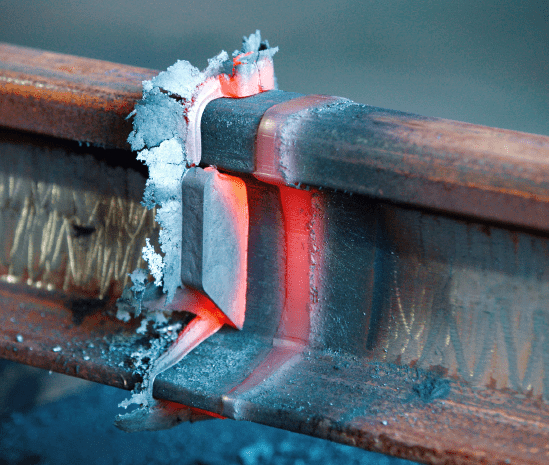Optimizing Your Welding WPS: Methods for Improved Efficiency and Efficiency
Optimizing Your Welding WPS: Methods for Improved Efficiency and Efficiency
Blog Article
Getting Welding Excellence: Revealing the Keys of WPS Application and Optimization
In the world of welding, attaining excellence is a pursuit that hinges on the careful execution and optimization of Welding Procedure Specs (WPS) By delving right into the crucial elements, approaches, obstacles, and finest techniques associated with WPS, a world of welding excellence awaits those who are prepared to discover its midsts.
Significance of WPS in Welding
The Value of Welding Treatment Requirements (WPS) in the welding sector can not be overemphasized, acting as the backbone for ensuring consistency, quality, and safety in welding operations. A WPS offers comprehensive directions on exactly how welding is to be brought out, including necessary variables such as products, welding procedures, joint layout, filler steels, interpass and preheat temperature levels, welding currents, voltages, traveling speeds, and much more. By adhering to a well-defined WPS, welders can maintain harmony in their job, bring about regular weld top quality throughout different projects.

Crucial Element of WPS
Reviewing the integral components of a welding procedure specification (WPS) is essential for understanding its role in welding operations. One essential aspect of a WPS is the welding process spec, which describes the particular welding processes to be used, such as gas tungsten arc welding (GTAW) or shielded steel arc welding (SMAW) By including these vital components right into the WPS, welding treatments can be standard, ensuring high quality, effectiveness, and safety and security in welding procedures.
Techniques for WPS Optimization

Second of all, training and credentials of welding personnel according to the particular demands of the WPS is extremely important. Providing extensive training programs and guaranteeing that welders are licensed to implement treatments detailed in the WPS can bring about better welds and decreased rework.
Furthermore, leveraging innovation such as welding software and monitoring systems can help in maximizing WPS. These devices can assist in tracking variables, guaranteeing parameters are within defined limits, and providing real-time feedback to welders, allowing them to make immediate changes for improved weld quality.
Common Challenges and Solutions
Dealing with challenges in executing the strategies for WPS optimization can prevent welding procedures' effectiveness and high quality. One common challenge is inadequate training or understanding of the welding treatment requirements (WPS) among the welding team.
An additional difficulty is the lack of proper documents and record-keeping, which is vital for WPS optimization. Without clear records of welding criteria, products used, and examination outcomes, it becomes tough to determine areas for renovation and guarantee uniformity in welding processes. Implementing a durable documentation system, such as electronic welding administration software program, can assist streamline record-keeping and assist in data evaluation for constant renovation.
Additionally, irregular welding equipment calibration and upkeep can pose a substantial challenge to WPS optimization. Routine tools checks, calibration, and maintenance timetables ought to be stuck to strictly to make sure that welding parameters are precisely regulated and maintained within the defined tolerances (welding WPS). By attending to these typical obstacles with positive services, welding procedures can boost performance, quality, and general welding quality
Ideal Practices for WPS Implementation
To make sure successful WPS application in welding operations, adherence to sector standards and precise focus to information are vital. When launching WPS implementation, it is vital to begin by thoroughly comprehending the details welding requirements of the job. This involves a thorough review of the welding procedure specs, products to be welded, and the ecological conditions in which the welding will occur.
When the demands are clear, the following action is to pick the appropriate welding procedure that lines up with these specs. This entails getting in touch with the relevant codes and criteria, such as those supplied by the American Welding Society (AWS) or the International Organization for Standardization (ISO), to ensure compliance and top quality.
Additionally, documenting the whole WPS execution procedure is necessary for traceability and quality assurance. Thorough documents should be kept regarding welding criteria, product prep work, preheat and interpass temperatures, welding consumables used, and any type of discrepancies from the original procedure. Regular audits and reviews of the WPS can help recognize locations for enhancement and make sure continuous optimization of the welding process.


Verdict
To conclude, the implementation and optimization of Welding Treatment Specifications (WPS) is critical for achieving welding excellence. By recognizing the essential components of WPS, executing reliable techniques for optimization, resolving common obstacles, and following finest practices, welders can make sure high-quality welds and risk-free working problems. It is vital for specialists in the welding market to focus on the correct application of WPS to boost overall welding performance and achieve blog wanted outcomes.
The Significance of Welding Treatment Specifications (WPS) in the welding industry can not be overstated, offering as the foundation for making certain uniformity, top quality, and safety and security in welding operations. A WPS supplies in-depth directions on exactly how welding is to be brought out, including essential variables such as products, welding procedures, joint design, filler metals, preheat and interpass temperatures, welding currents, voltages, traveling rates, and more. One critical facet of a WPS is the welding process spec, which details the specific welding procedures to be made useful site use of, such as gas tungsten arc welding (GTAW) or protected steel arc welding (SMAW) By including these key components into the Get More Information WPS, welding treatments can be standard, guaranteeing quality, efficiency, and safety and security in welding procedures.
It is vital for specialists in the welding market to prioritize the correct execution of WPS to improve total welding performance and attain wanted end results.
Report this page